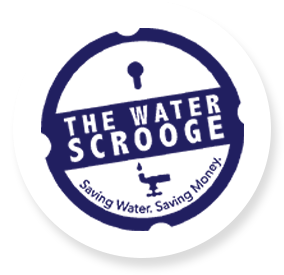3 min read
The 4 Best Water-Savings Devices for Large Multi-Family Buildings
![]() David Schwartz
Aug 23, 2016 9:00:00 AM
David Schwartz
Aug 23, 2016 9:00:00 AM

Have you started planning for retirement?
The best retirement plans are multi-facetted, utilizing diversified investments, budgeting plans and a number of other
strategic moves. Though it may seem like a stretch, tackling astronomical water bills for large, multi-family buildings involves a similar thought process.
It's not going to be just one action that helps you reach your goals; it's going to be a serious of actions taken after evaluating opportunities from all angles. Put simply, if you're serious about lowering your water bills, it's not enough to install some low-flow showerheads and call it a day. Our research shows the average residential landlord is overpaying by about $500 per unit per month.
In the face of ever-rising NYC water bills – the water and sewage rates just increased to $3.89 and $6.19 per one hundred cubic feet respectively this past July – landlords need to be on their A-game. In this article, we'll outline our favorite water-saving devices for helping you save serious cash:
1. Tamper-Proof Shower Regulators
Notice we said "tamper-proof." That's because tenants are notorious for removing low-flow showerheads and replacing them with their preferred high-pressure models. The sad reality is in lieu of completely inappropriate unit inspections, landlords wouldn't be the wiser! That's why we invented The Water Scrooge– a one-of-a-kind, hidden device that manages to provide regulation without sacrificing pressure.
As you probably already know, older model showerheads commonly use as much as 4 gallons of water per minute, while newer models typically use around 2 gallons per minute (Note: The Water Scrooge control water to 1.75 gpm). While it's hard to calculate exactly how much these switch-outs actually cost landlords (it varies widely according to individual shower habits, number of tenants and so-on), it's not hard to calculate how much can be saved by switching from older to newer models.
If your average'tenant takes ten 10-minute showers a week with an old showerhead, that translates to 400 gallons of water a week or about 1,600 gallons of water a month. Let's assume you have 1,000 tenants. That's 1.6 million gallons of water over the course of a month. Invest in high-quality, low-flow showerheads and that number gets cut in half (and so does your bill)! FYI: These numbers are being used for example purposes; our research shows a shocking number of people actually take 20+ minute showers)
2. Tamper-Proof Faucet Aerators
How much water do individuals really need for brushing their teeth and washing their dishes? While no one wants to be inconvenienced due to lack of water pressure, no one needs a monsoon.
On average, bathroom and sink faucets account for 16 percent of water usage in homes. Though Federal Plumbing Standards now specify that kitchen faucets use no more than 2.5 gallons per minute (GPM) and bathroom faucets use no more than 2.2 GPM, many older apartment buildings are still equipped with outdated models using as much as 5GPM.
One easy way to get a handle on high-flow faucets is to install tamper-resistant aerators. The inconspicuous device limits the amount of water released through the faucet with a barrier net. Check out our 1.0 GPM aerators for apartment kitchen and bathroom sinks.
3. Wireless Toilet Monitoring Systems
Did you know it's now possible to wirelessly monitor your building's toilets for leaks from an app on your phone? The new Toilet Scrooge – a 24/7, electronic monitoring system – allows you to do exactly that. The unobtrusive device sits near the base of the toilet, instantly reporting on fill cycles, flushes per day and a variety of useful data points. Why should you care?
According to the Environmental Protection Agency, toilets account for 26 percent of the water used in the average home. It's well-known by plumbers that a medium-sized, silent leak can waste up to 250 gallons of toilet water a day. That translates to roughly 108,000 gallons a year. If you consider that 1 in 5 toilets has a leak at any given time, according to the American Water Works Association, that can easily add up to $24,000 a year for a 100-unit building!
4. Toilet Calibration
Finally, no large-building plan would be complete without a toilet calibration plan. Due to a variety of factors – accumulated water pressure, mineral deposits, corrosion of parts – toilets gradually cycle through more water over time. Calibration is the process of fine-tuning the parts within the tank so your toilet uses the minimum amount of water necessary.
Faulty flapper valves, improperly adjusted ballcocks and mineral deposits can toilets to use more water than necessary. By replacing your tank's components with higher-quality parts (we're talking a few dollars cost here), and resetting them, you'll fix costly running leaks that silently rack up bills into the thousands.
Ready to Start Saving?
While implementing any one of these solutions will provide significant savings, we recommend starting with the one or two that will yield the biggest impact. The Water Scrooge works with large, multi-family building owners to build customized savings plans that get results. So much so, that we'll continue monitoring your water usage and providing you with personalized reports long after the installation is done.


